What It’s Like Riding Iceland’s Stunning Westfjords
Adventure Ride thru out-of-this-world scenery and virtually limitless off-road terrain.

If there was one country that has been consistently dominating riders’ bucket lists – and will probably continue to top the most popular motorcycling destinations for years to come – it’s Iceland. The mysterious Land of Fire and Ice boasts out-of-this-world scenery, rugged terrain, and virtually limitless off-road riding. But what’s it really like to ride there, what kind of terrain can you expect, and which gear works for its unpredictable weather?

This August, I rode Iceland’s Westfjords region as part of a six-day tour on a Husqvarna 701. Westfjords is one of Iceland’s most rugged and remote peninsulas covering over 14,000 square miles of sparsely populated mountains and fjords. Located some 200 miles North of the capital Reykjavik, the Westfjords area offers a true motorcycling paradise for both on road and off-road adventures as it boasts stunning coastal twisties as well as countless gravel trails crisscrossing the region. Compared to other regions of Iceland, Westfjords are the least populated – and arguably, the most scenic.
Icelandic Terrain

While the weather made me think I’d rather come back to Iceland in an expedition truck rather than a bike, the terrain here is nothing short of mind-blowing. Roads are as scenic and twisty as you think they are – miles and miles of curves around the fjords and sweeping bends over the mountains – but it’s the off-road trails that make Iceland truly stand out.


From black lava fields to shale, sand, gravel, and rocky tracks, you’ll find every type of terrain and every level of difficulty riding here. For riders looking to enjoy the scenery and really twist that throttle, there are plenty of wide, hard-packed dirt roads hugging the shoreline and crossing the highlands. In addition, there are countless trails offering more technical riding: pebble-strewn beaches, narrow fjord tracks, river crossings, and sand abound in Iceland, and the only rule for off-roading is you’re not allowed to leave the trails (that is, no cross-country, off-piste riding, but any trail or track you find is fair game).


Whether you stick to the bigger gravel trails or look for singletrack out in the sticks, there are two things to watch out for: expedition vehicles and…sheep. Iceland is incredibly popular among the 4×4 crowd, so even in its more remote regions, you’ll probably encounter off-road capable expedition trucks on a daily basis. Sheep mostly roam free and have traffic rules of their own, so watch your speed around blind corners – you never know when an animal might wander into the middle of the trail.

Layer Up
Having ridden some 1,300 miles during the trip, I’ve experienced the entire spectrum of Icelandic weather from sunny days to torrential rain and gale-force wind gusts in a span of a week. Being somewhat optimistic that the temperatures might still be mild at the end of summer, I expected my full-on adventure gear to be a bit of an overkill: I brought GoreTex socks, a thin merino wool base-layer, a windproof thermal layer, and my waterproof Klim Artemis suit paired with GoreTex gloves. Since the ride was 50/50 on road/off-road, I figured I might have gone a little overboard with all the layers.

But the reality is, Iceland is, well, icy. Even on sunny days with blue skies over the horizon and the thermostat showing a cheery 53° Fahrenheit, the ride was cold. Iceland sits just below the Arctic circle, and the icy winds blasting its Western shores from Greenland mean a lot of brr during the braap. To keep warm, I wore my one-piece rain suit over the gear every day – not so much for the possibility of rain, but as extra wind protection.

On the off-road sections, the rain suit came off as we had to work our way through varied terrain at a lively pace. On-road, however, this setup worked well; I may be overly sensitive to cold having experienced a bad case of hypothermia a few years ago, but if you’re planning to ride Iceland, do gear up. It’s always easier to remove layers than realize you haven’t packed enough, and even if you’re aiming to ride solely off-road, the weather in Iceland is something to contend with. In addition to the cold days, rain can be relentless, so waterproof gear is a must. Finally, there’s gale: one of the days, our guides chose to modify the route since the winds were so fierce, riders were literally getting blown off the trail atop the fjords. I lamented my choice of a simple neck buff rather than a full winter neck warmer just about every day.

To sum up, the best riding gear for Iceland is fully waterproof, well-insulated adventure pants and jacket, waterproof boots (or socks), a neck warmer, a good thermal layer, and warm waterproof gloves. Icelanders themselves might be sporting lightweight enduro gear, but remember, they’re Icelanders – I have witnessed locals strolling outside in T-shirts when the temperature was barely 40° Fahrenheit.
Fuel And Accommodations

It’s also important to keep your fuel range somewhere around 130-150 miles, as gas stations in the more remote areas can be few and far between. Food and lodging (hotels and guesthouses) aren’t difficult to find due to Iceland’s well-developed travel infrastructure aimed at tourists, and there are plenty of designated camping areas throughout the country (wild camping is no longer allowed).
Best Time to Ride

Iceland has a somewhat limited time window for riding (May through to September) due to the climate conditions. July and August are the warmest months, but keep in mind that during the summertime, daylight lasts for twenty hours. Sleeping through a Nordic “white night” can be difficult if you’re not used to it, so bring an eye mask! Finally, if you ride Iceland in September, you might be able to see the Northern Lights. We were lucky enough to witness spectacular Northern Lights in the Westfjords as early as the 31st of August.
The summer temperatures in Iceland are around 50-55° F, but remember those icy winds and high probability of rain.

Bike Rental and Shipping Options
Off-road motorcycle rentals in Iceland can be tricky (although that is pretty much the case around the world). I rode Iceland with the Ride With Locals tour company aboard a Husqvarna 701, and I’d recommend checking them out as they provide a truly local experience. Sworn off-road maniacs, the Ride with Locals crew know Iceland so intimately you’re guaranteed to explore the country’s most scenic trails and routes, and should something go wrong, there’s a chase truck nearby with all the spares and tools you might need. The company offers dual-sport and pure enduro tours in Iceland ranging from a few days up to a week, and it felt like the Husqvarna 701 was just about the perfect bike for Iceland: you wouldn’t want something smaller as the distances are long, and you wouldn’t want a 1200cc beast either, as some of the off-road riding can get quite technical.

Biking Viking in Reykjavik also offers motorcycle rentals, but the choice is limited to BMW GS adventure bikes rather than dual-sport or off-road motorcycles. Finally, there’s an option to ship your own motorcycle to Iceland with European companies like Motobirds or you can catch a ferry from Denmark. Shipping to Iceland isn’t exactly cheap though (then again, neither is Iceland, overall), but if you’re planning to spend more than two weeks exploring and want the freedom of having your own bike, this is a great option.

Iceland is hands-down one of the most stunning, scenic, and rugged places I’ve ever ridden, but don’t take its weather and terrain lightly: good gear and off-road experience is a must.
Photos by Egle Gerulaityte.




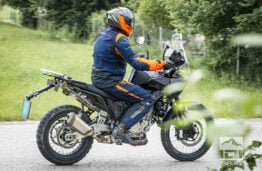
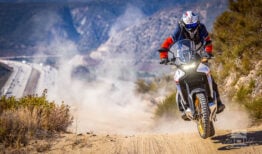
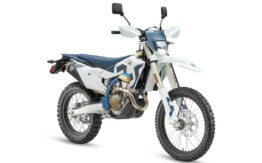

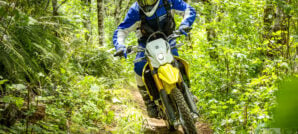

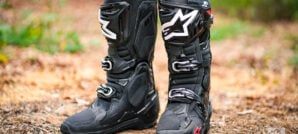
Notify me of new posts via email
Great article Egle!
[…] 101: What To Know Before Riding The Stunning Westfjords ADV Pulse Source link : https://www.advpulse.com/adv-news/iceland-101-what-to-know-before-riding-the-stunning-… Author : Publish date : 2022-09-30 17:46:02 Copyright for syndicated content belongs to the linked […]